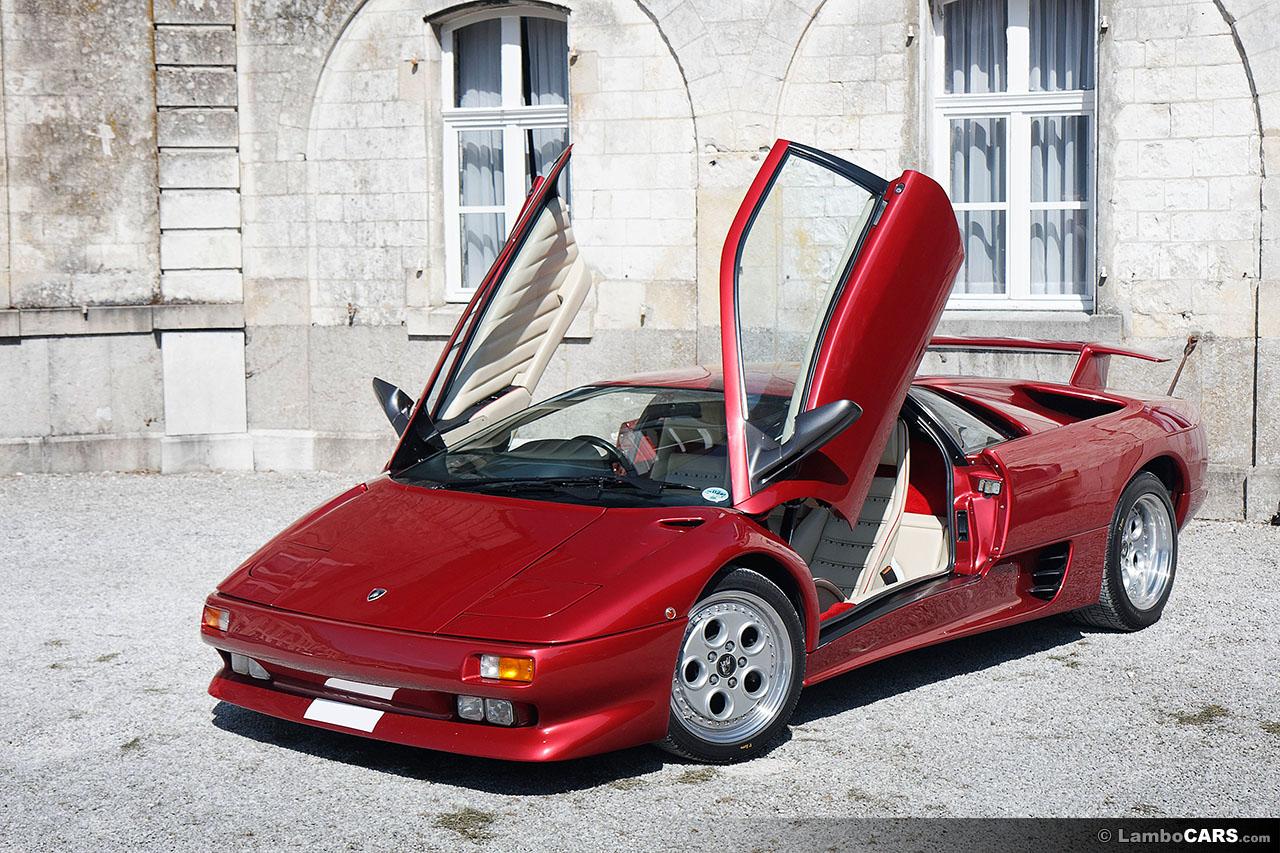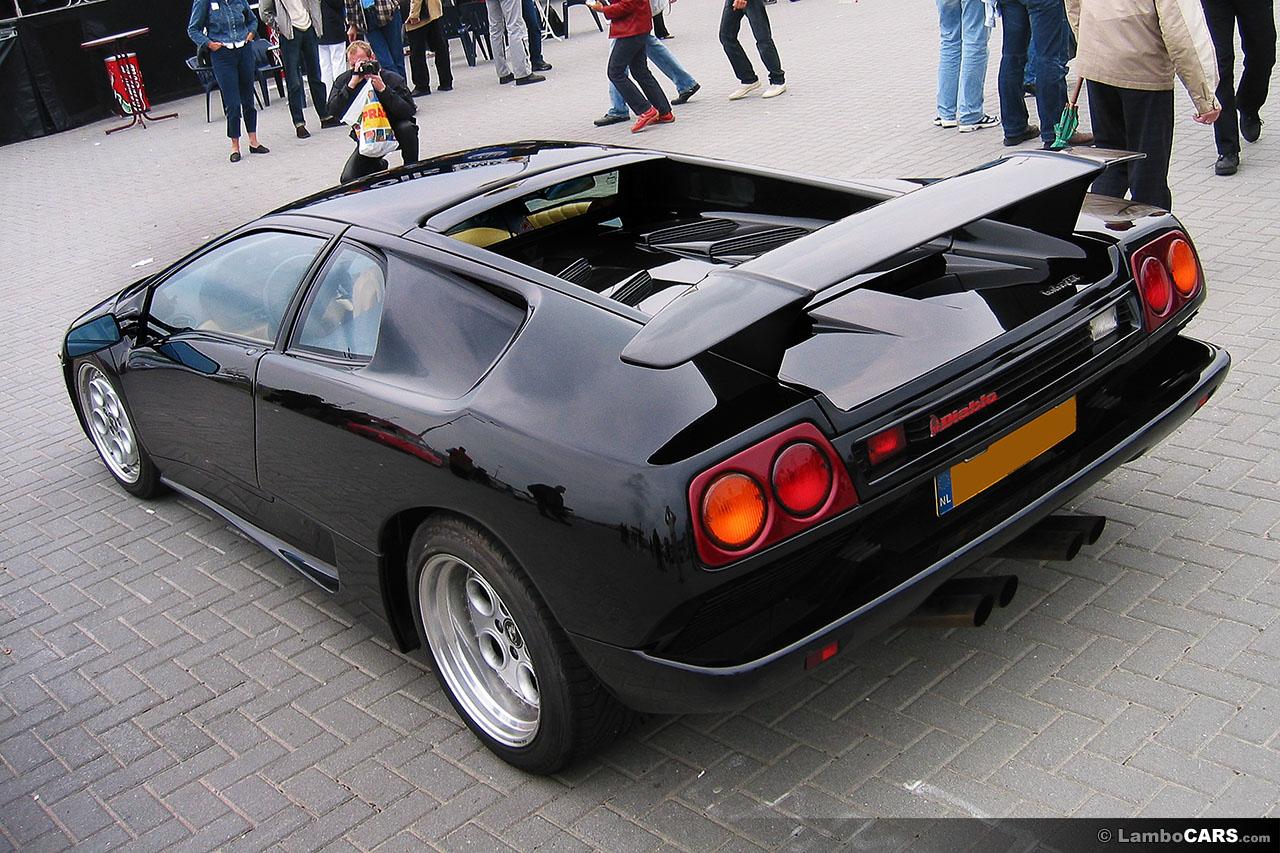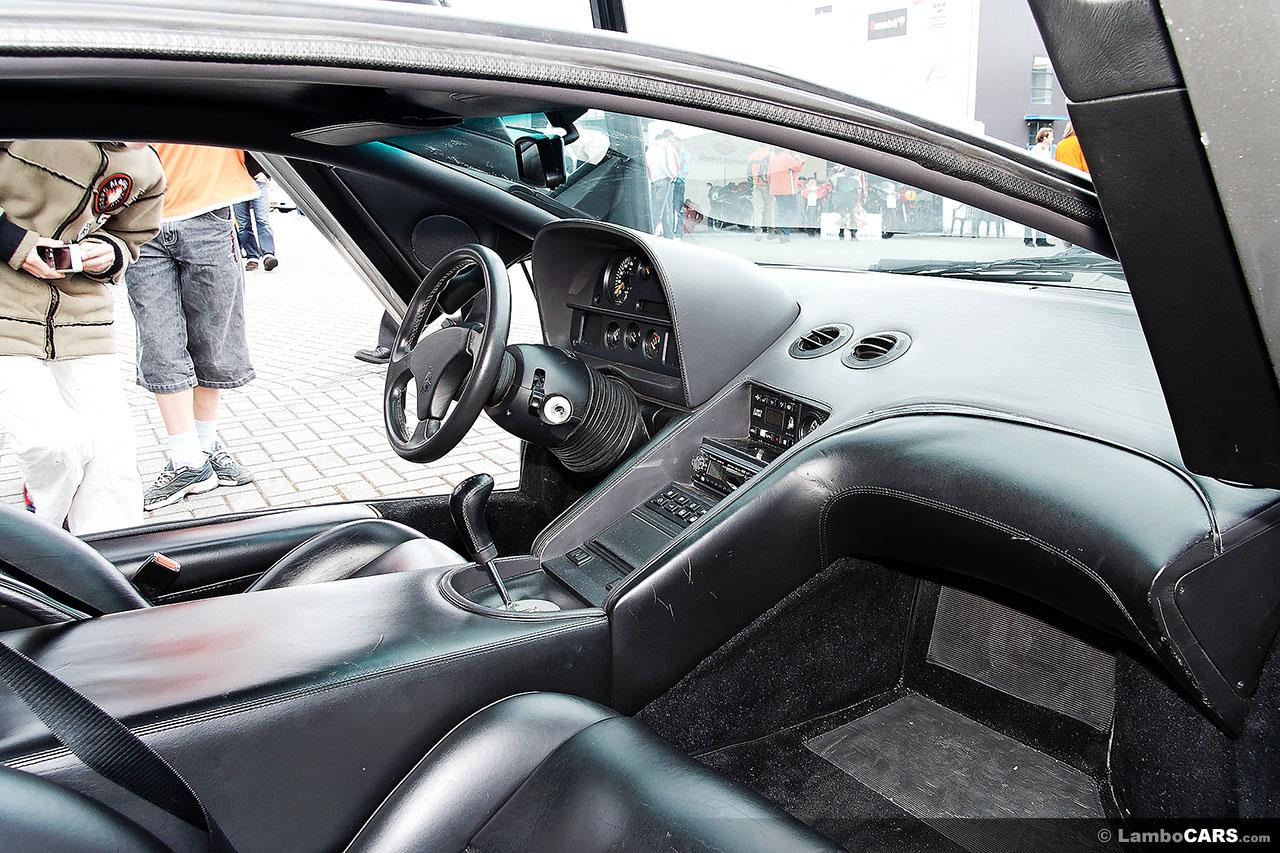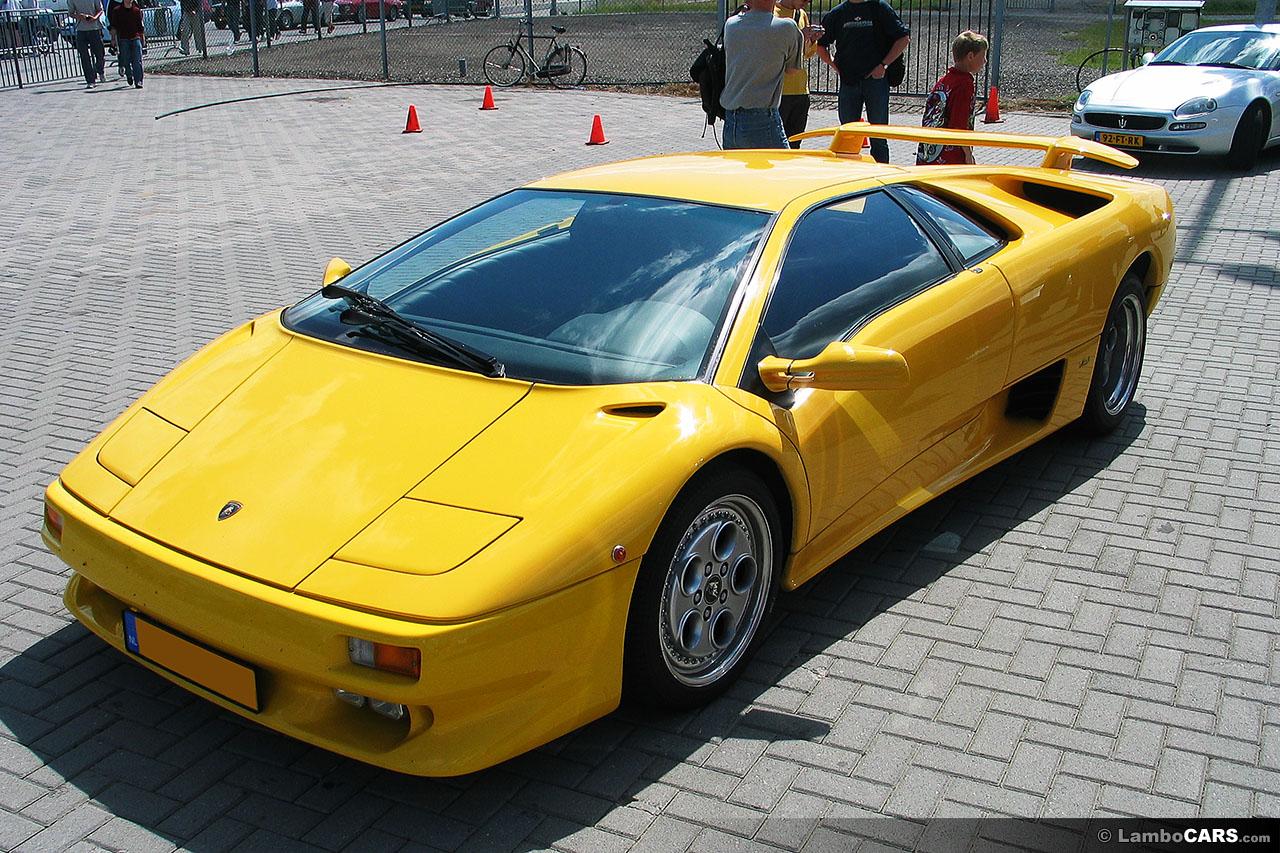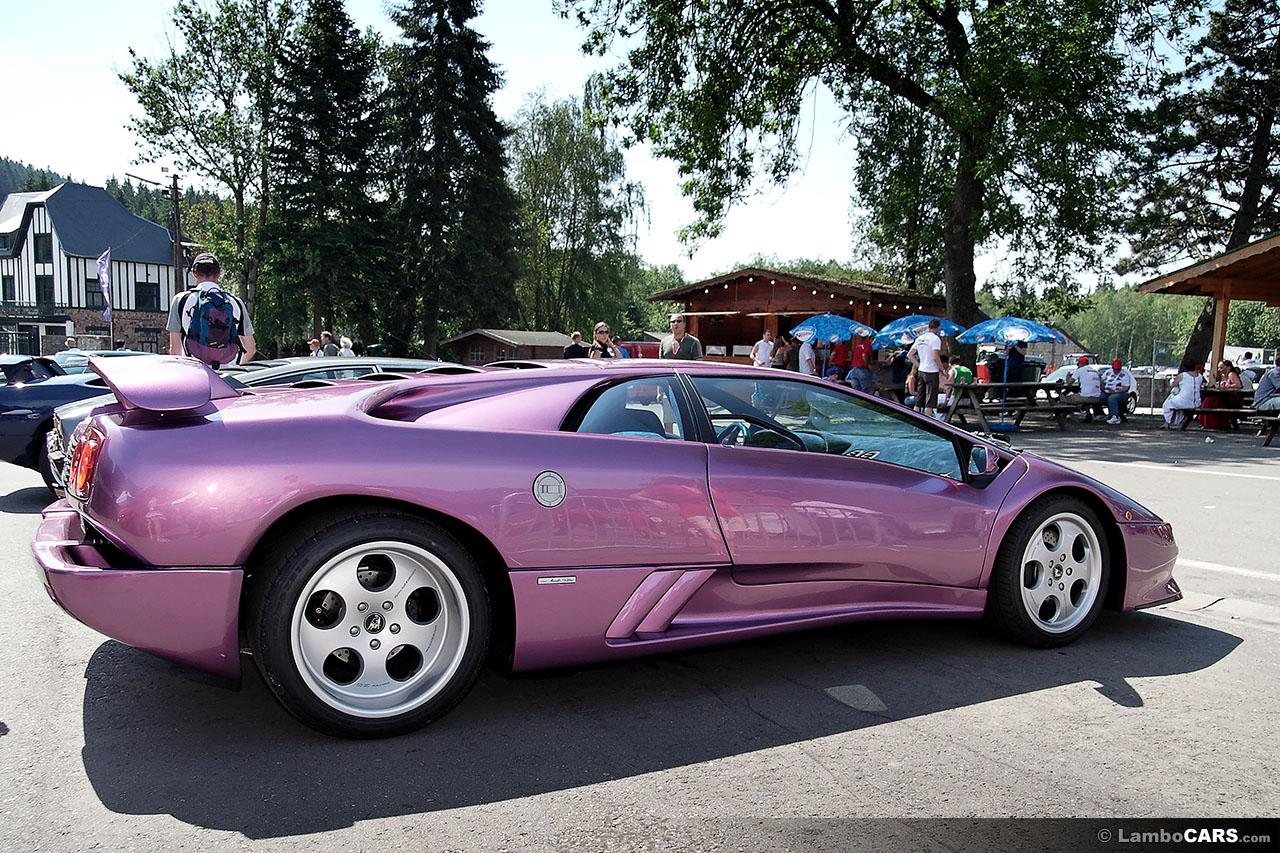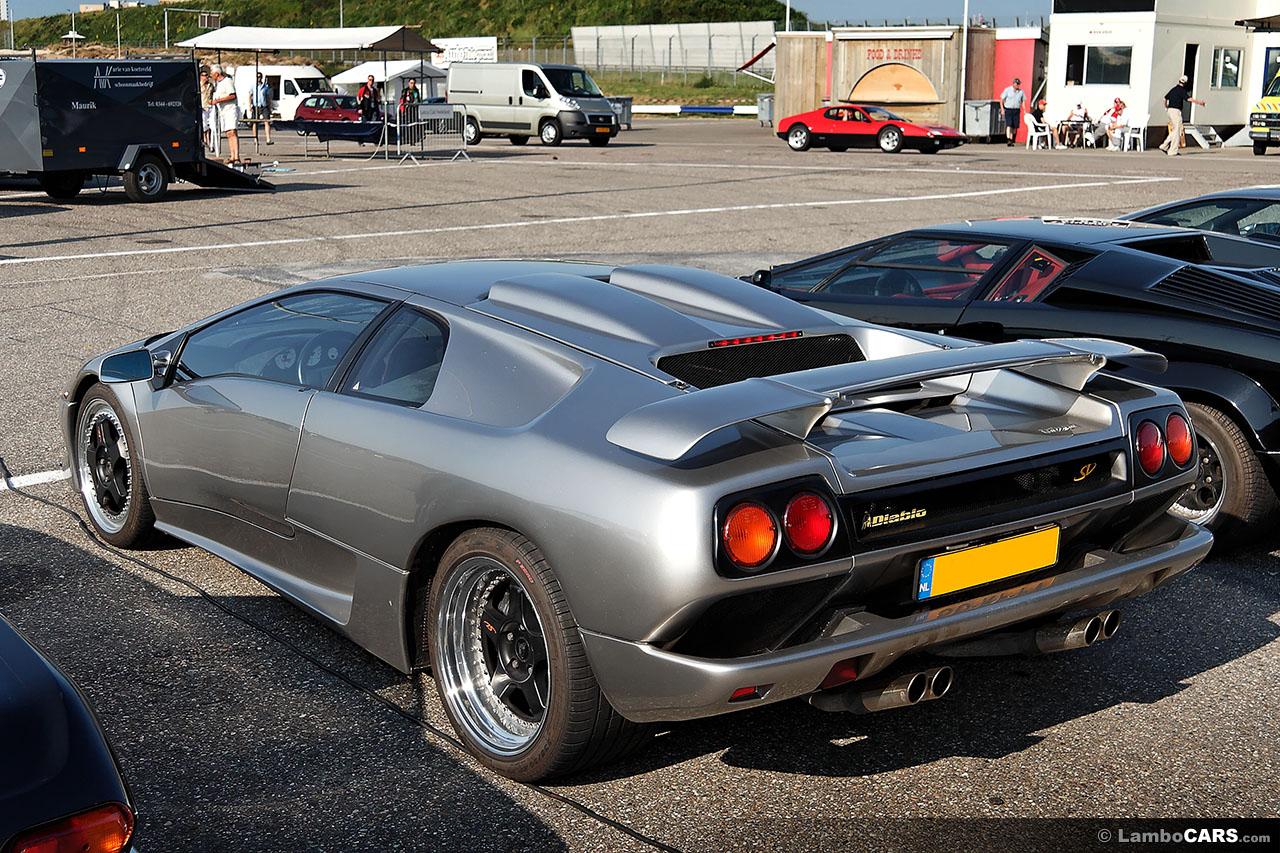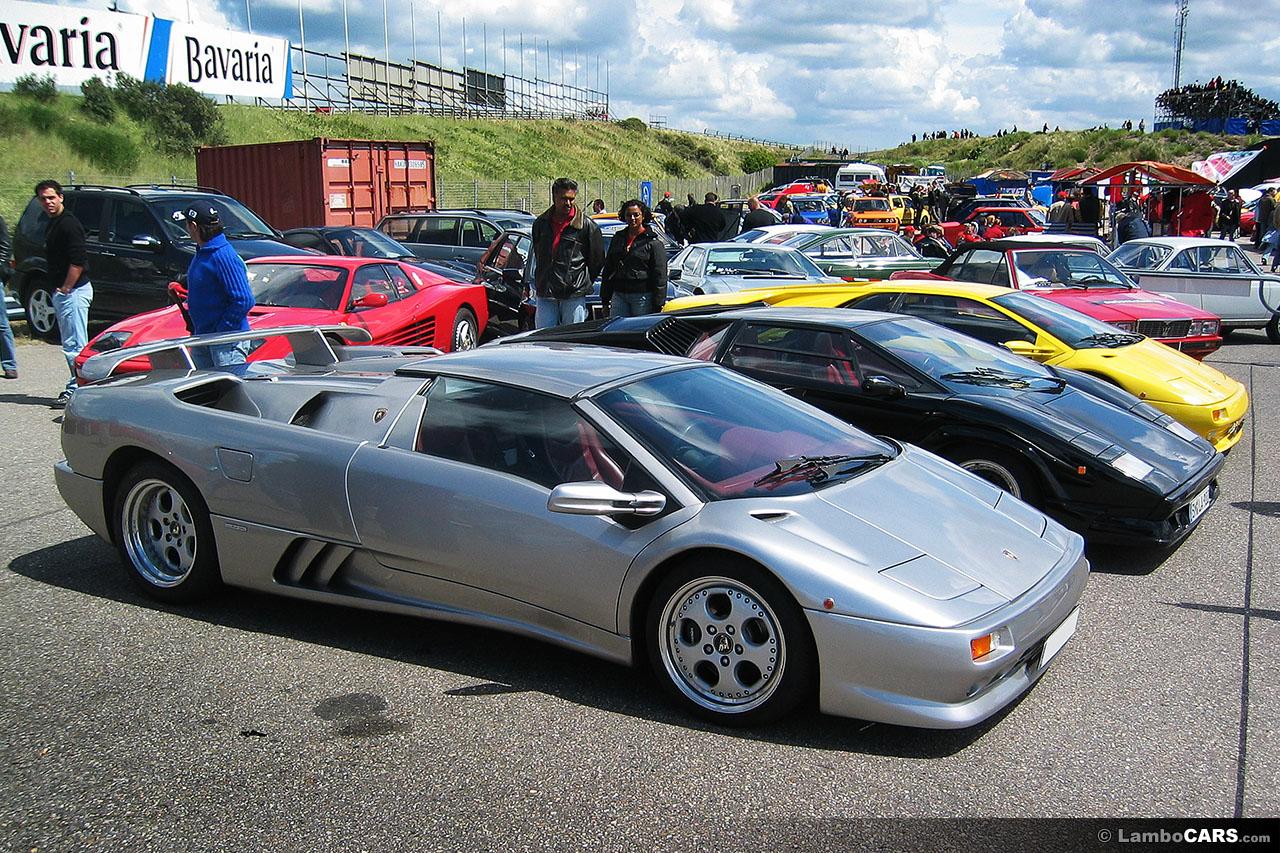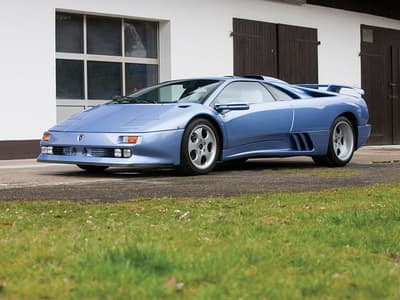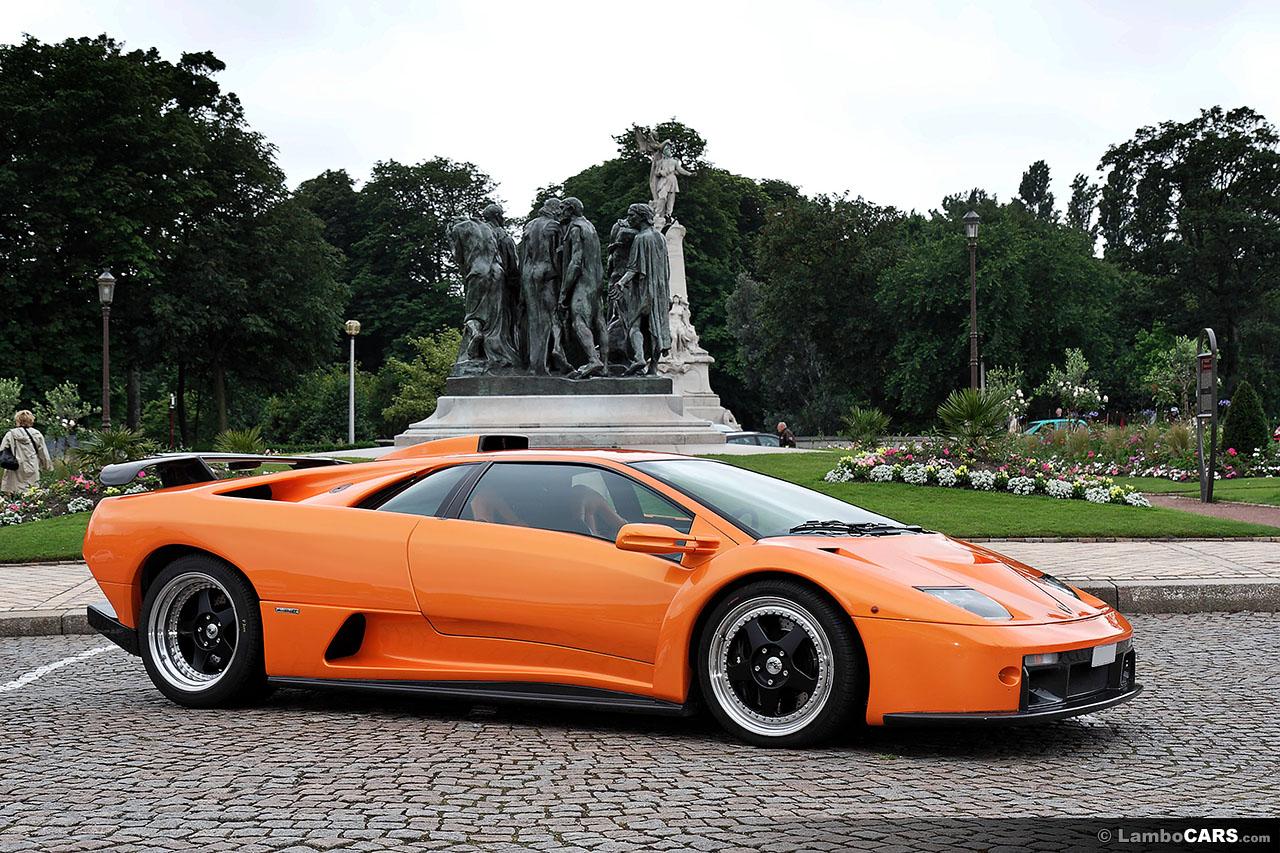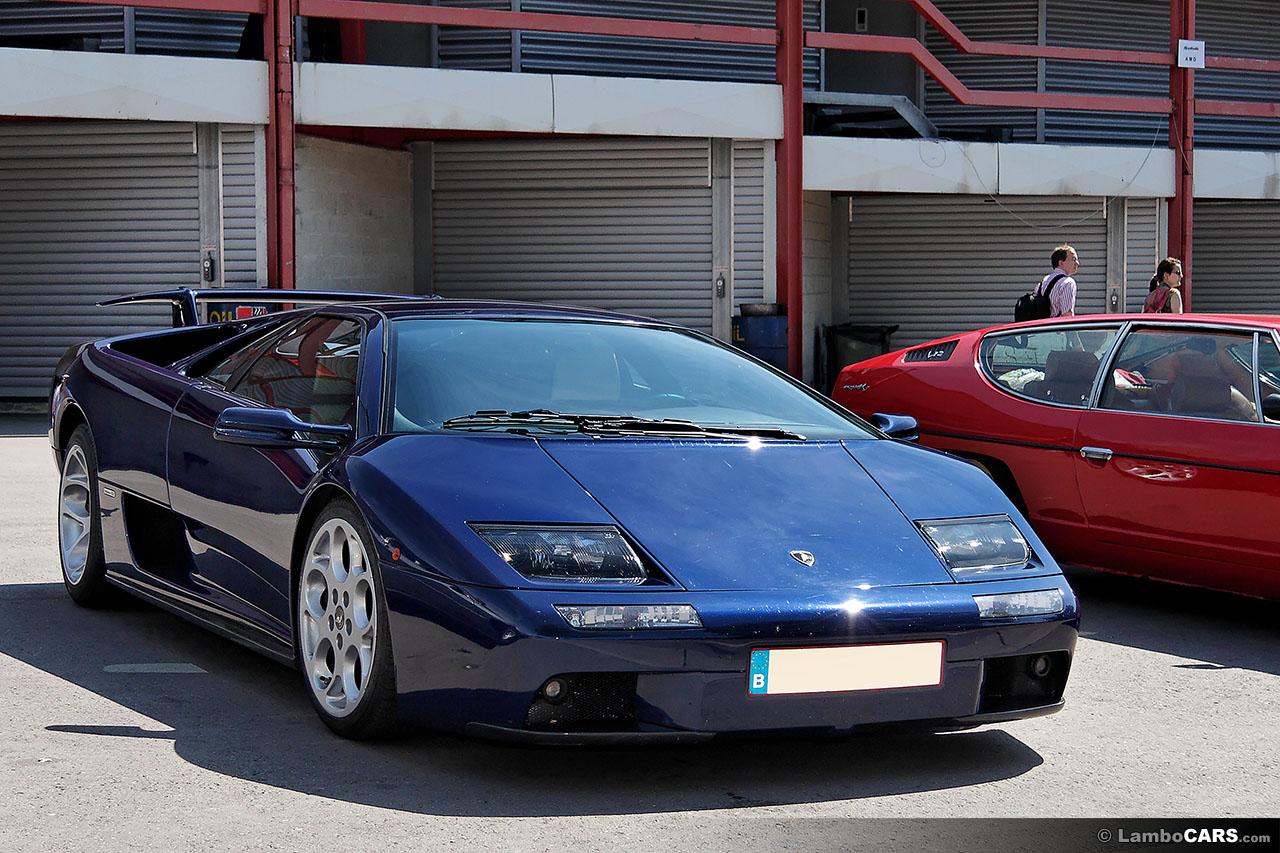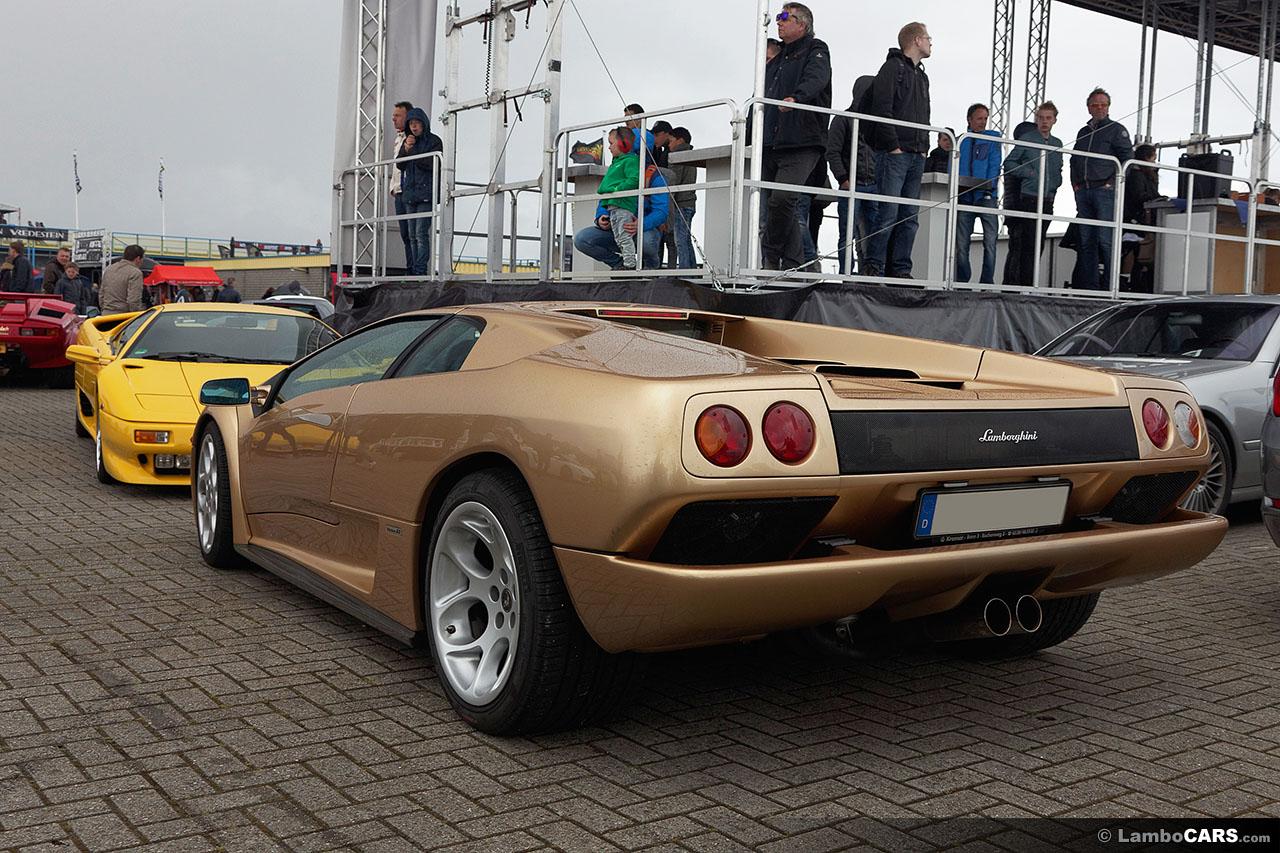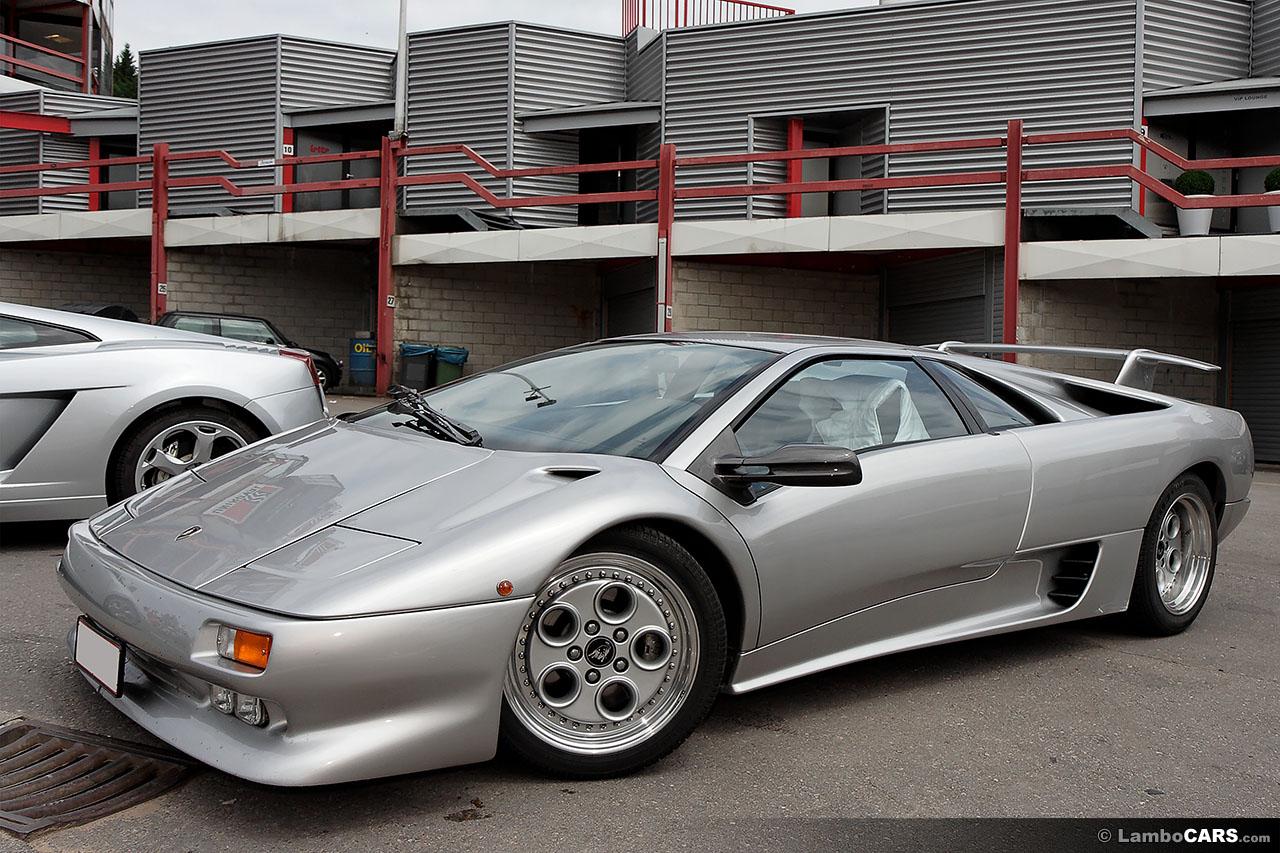Automobili Lamborghini SpA was founded in 1963, Ferruccio decided the time was right to create the perfect car, a V12 powered Gran Turismo, showing the 350 GTV prototype that would evolve into the first Lamborghini production car ever, the 350 GT, after that, we would see a 400 GT, the Islero, the Espada and the Jarama … and that would be the end of the Lamborghini GT era.
1990 – The Diablo is unveiled
We all know Lamborghini for their more extreme supercars, a history that started with the beautiful Miura from the Sixties that evolved into the spaceship-like Countach which became a bedroom poster car for many among us, and while the Countach was a big success being built from 1974 to 1989 … about 15 years in total, it was clear to Automobili Lamborghini SpA the Countach needed a replacement in the Eighties, it would take until January 1990 for the new V12 flagship to be unveiled to the public.
The Lamborghini Diablo was presented to the public 30 years ago, on January 21. 1990, at the Hotel de Paris in Monte Carlo during the second Lamborghini Day (the first one was held when the Anniversario was presented in 1988), after five years of development and about $7,000,000 went into the project.
The name ‘Diablo’ was taken from a ferocious bull raised by the Duke of Veragua in the 19th century, it fought an epic battle with ‘El Chicorro’ in Madrid on July 11. 1869, this animal became legendary and it’s well-known history and its name were aggressive enough to be used for a Lamborghini.
The brief for the Countach successor was simple … make it fast, at least 315 km/h, almost 200 mph, Marcello Gandini designed the prototype for the Lamborghini Diablo, but in the middle of the development Lamborghini was bought by Chrysler, and they changed the design considerably into what became the P132, while the original Gandini design would be resurrected as the Cizeta Moroder V16, do note that the Diablo still featured Gandini’s signature on the side.
The Diablo V12 engine took the final evolution of the Countach engine, the Quattrovalvole, and took it to the next level, increased displacement of 5.7 liter, multi-point injection developed together with Weber and Marelli … the result was 492 hp in the original Diablo 2WD and the top speed was 325 Km/h.
A Lamborghini Diablo was still 204cm wide, just about the same as the Countach, but without wheel arch extensions, and while the rear bumper on the Diablo was designed with an integrated wing for downforce, an optional rear wing was still possible eventually … naturally, the doors still opened toward the sky, that’s a Lamborghini V12 trademark ever since the Countach.
1993 – The Diablo VT
First deliveries of the Lamborghini Diablo started in June 1990, almost exactly 30 years ago at the time of writing, and the Diablo became a success with many sales in the years to come … from 1993 on the Diablo VT was available, with four-wheel drive ‘Viscous Traction’, that meant part of the power could be transferred to the front wheels when the rear ones lost their grip … this setup would become standard on the next generations of V12 models, but the Diablo VT also introduced power steering and a smaller dashboard pod for increased visibility.
While the Diablo 2WD received 245/40 ZR 17 tires, on the VT version these became 234/40ZR17 while the rear remained the massively wide 335/35SR17, and the Diablo VT received exterior rearview mirrors color-coded to the body (the Diablo 2WD came with dark grey, almost black mirror housings before) … but apart from the small VT badge at the rear, there wasn’t too much difference between the two models.
From 1993 on the engine bay of the Diablo was cleaned up, carbon fiber covers were placed around the engine, and the central cover over the manifold became much nicer, also note the Diablo VT came with electronically adjustable Koni shock absorbers, with four settings chosen manually or by the computer.
1993 – The Diablo SE30
As Lamborghini was founded in 1963 by Ferruccio Lamborghini, the company celebrated its 30th anniversary with a very special edition, the Diablo SE30, only 150 would be made, all individually numbered, and some of these would even be made more exclusive as the Diablo SE20 JOTA edition.
The Diablo SE30 was presented during the third Lamborghini Day in September 1993 in Sant’Agata, surrounded by about 140 other Lamborghini’s from all over the world, in a stunning purple metallic paint over a bleu Alcantara interior, the SE stood for Special Edition.
On the outside, things also changed a lot; some visible, but other changes were less well visible. Most of the bodywork was still made of aluminum panels, but several parts were made of Carbon Fiber, like the side-air-intakes and surrounding bodywork … on the engine, the manifolds were finished in gold … power output increased to 525 hp for the Diablo SE30 … top speed was 331 Km/h, the Diablo SE received stunning new wheels in massive 18-inch size.
1995 – The Diablo SV
On the 1995 Geneva Auto Show, Automobili Lamborghini SpA presented a new evolution of the Diablo series. The Diablo SV, where the SV stands for Sport Veloce, inspired by the Spinto Veloce on the legendary Miura SV 25 years earlier, the Diablo SV would become the entry-level V12 model from Sant’Agata, 510hp driving the rear wheels only and featuring a different front bumper, new wheels and two beautiful air intakes on the engine cover.
On the Diablo SV the rear wing came standard from the factory, as did a very large, swooping ‘SV’ on the side of the car, most of the SV came with that decal straight from the factory, but the customer could ask for the decal to come inside the car, not mounted. Most SV retained the Alcantara upholstery, but you could opt for a full leather interior … the SV logo on the headrest was fitted anyway.
1996 – The Diablo VT Roadster
Officially the first open-top production car from Lamborghini, the Diablo Roadster was shown in late 1995, taking the Diablo VT as a basis, adding new bumpers from and rear, new side skirt and naturally a completely new engine cover … to store the rigid roof panel when not in use, the Diablo VT Roadster was a beauty and sold very well.
Note that from 1998 on the dashboard inside the Diablo 2WD, VT, SV, and VT Roadster was redesigned to receive a passenger airbag for security, while in 1999 a major facelift was performed on the entire Diablo range, removing the pop-up headlights and putting fixed units in place, but also on the inside the dashboard was redesigned again and incorporated the passenger airbag a lot better, in 1999 production of the Diablo 2WD was halted too.
1999 – Diablo GT
The Diablo SV was a great car, they even made a Diablo SV-R race car for a single make championship, but the most sought-after Diablo is the GT version, only 80 were to be built at the end of 1999, and it wasn’t even legal to drive on the road in the USA, in the end they made 83 units.
If compared to the normal Diablo, the obvious difference was the bodywork, it became very aggressive, with a true race feeling about it. The suspension geometry was altered with an improved chassis configuration and by using more composite materials, the overall weight was lowered.
The Diablo GT received an enlarged V12 engine, 5992cc with a maximum power output of 575 hp, top speed would be nearly 340 Km/h, this was the fastest Lamborghini ever at that time, the extremely aggressive-looking bodywork of this Diablo GT was almost completely made of carbon fibre, only the roof was still made of steel and the doors were kept in aluminum. The GT also used an air intake on top of the engine cover, but on the GT it was dynamically controlled by the engine electronics, the big front spoiler was completely redesigned, incorporating a large air intake for the new front-mounted oil cooler.
2000 – Diablo VT 6.0
The first thing Luc Donckerwolcke was asked to do when taking the job of designer at Automobili Lamborghini SpA for Audi AG was to modernize the Diablo design, and make this supercar last at least one more year to bridge the gap to the introduction of the new Murciélago … this would become the Diablo VT 6.0 model.
While the engine for the VT 6.0 was based on the 6-liter Diablo GT engine, it was slightly detuned to 550 hp, but this model still reached 335 km/h with ease, for the MY2000 this was the only Diablo built at the factory, the SV and VT Roadster production was halted (a special edition Millennium Roadster was available, only 30 ever made including only 10 for the US)
2001 – Special Edition Lamborghini Diablo 6.0
At the 2001 Geneva Motor Show in March the swansong of the Diablo range was shown, the Diablo 6.0 SE, only 40 would be built, 20 of each exclusive color : Oro Elios (gold) and Marrone Eklipsis (metallic brown).
This rare, limited edition of the Lamborghini Diablo would become the last version to be built in Sant’Agata, when the last units of the Diablo were rolling off the assembly line, the successor, the Murciélago pre-production models were already being built … after nearly 11 years the Diablo reign came to an end after about 2,900 units were built, making it the most successful Lamborghini to date.

